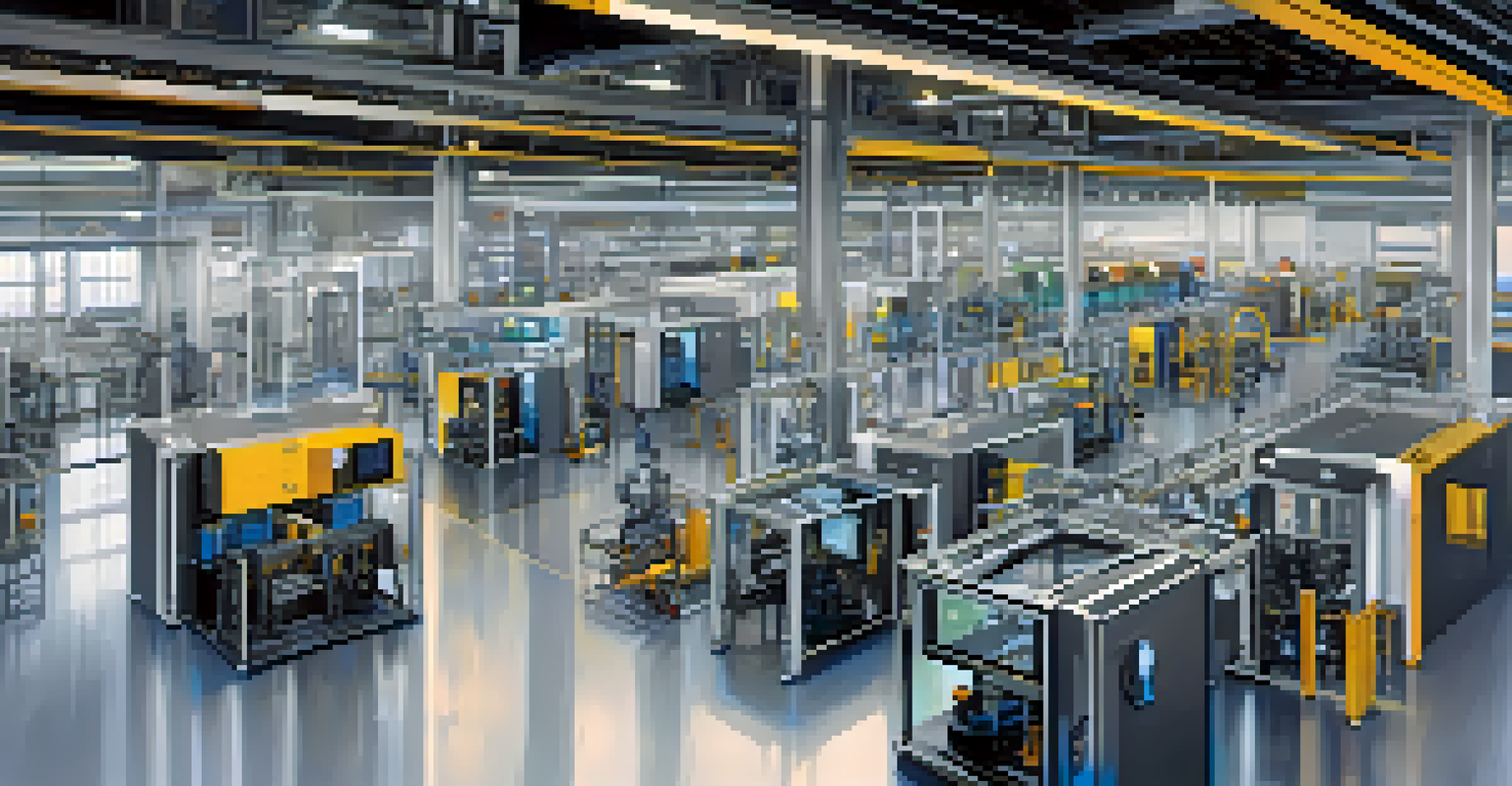The Intersection of AI and Digital Twin Innovations

Understanding Digital Twins and Their Applications
Digital twins are virtual replicas of physical systems, used to simulate, analyze, and optimize performance. Think of them as digital mirrors that reflect real-world processes in real-time. Industries like manufacturing, healthcare, and urban planning leverage this technology to enhance efficiency and decision-making.
The biggest benefit of digital twin technology is that it allows companies to gain insights into their operations and optimize their processes without disrupting actual production.
For example, a digital twin of a manufacturing plant can help monitor machinery conditions, predict failures, and optimize production lines. By having a virtual counterpart, companies can experiment with changes without risking real-world operations. This ultimately leads to cost savings and improved operational resilience.
As we move further into the digital age, the potential for digital twins to revolutionize various sectors becomes increasingly clear. Their ability to provide insights and predictive analytics makes them invaluable in a world that demands agility and precision.
The Role of AI in Enhancing Digital Twin Functionality
Artificial intelligence is a game changer for digital twins, adding layers of intelligence and adaptability. By integrating AI algorithms, digital twins can analyze vast amounts of data and provide actionable insights. This capability transforms static simulations into dynamic tools for real-time decision-making.

For instance, AI can predict maintenance needs for equipment by analyzing operational data, which helps prevent costly downtimes. Imagine a smart city where digital twins manage traffic flow by learning patterns and adjusting signals accordingly—this is the power of AI-enhanced digital twins in action.
Digital Twins Enhance Performance
Digital twins provide virtual replicas of physical systems, allowing industries to simulate and optimize operations for better efficiency.
Thus, the collaboration between AI and digital twins not only improves operational efficiency but also fosters innovation in how we approach complex challenges across industries.
Real-World Examples of AI and Digital Twin Integration
Several companies are already harnessing the power of AI with digital twins to drive innovation. For example, Siemens uses digital twin technology in its manufacturing processes to optimize production schedules and reduce waste. The AI algorithms analyze historical data to forecast demand and adjust operations in real-time.
Artificial intelligence is not just about machines taking over; it's about enhancing our capabilities and transforming the way we work.
In healthcare, organizations like GE Healthcare utilize digital twins to simulate patient outcomes based on various treatment plans. This allows doctors to visualize the most effective approaches before they ever administer treatment, leading to improved patient care.
These examples showcase the practical benefits of combining AI with digital twins, demonstrating how this intersection can lead to smarter, more efficient operations in diverse fields.
Challenges in Merging AI with Digital Twin Technologies
While the fusion of AI and digital twins holds immense promise, it is not without challenges. One major hurdle is the complexity of integrating AI algorithms into existing digital twin frameworks. This requires a robust understanding of both technologies and their compatibility.
Data privacy and security are also significant concerns, particularly in industries like healthcare where sensitive information is involved. Ensuring that AI systems do not compromise data integrity while still delivering insights is a balancing act that organizations must navigate.
AI Boosts Digital Twin Capabilities
Integrating AI with digital twins transforms them into dynamic tools that offer real-time insights and predictive analytics for improved decision-making.
Addressing these challenges is crucial for the successful implementation of AI-enhanced digital twins. With the right strategies and investments, companies can unlock the full potential of these innovative technologies.
Future Trends: AI and Digital Twins in the Next Decade
Looking ahead, the future of AI and digital twin technology is promising. As advancements in machine learning and data analytics continue, we can expect more sophisticated digital twins that can simulate even more complex systems. This will lead to improved responsiveness and predictive capabilities across various industries.
Moreover, as the Internet of Things (IoT) expands, the data available for digital twins will grow exponentially. This influx of real-time data will enhance the accuracy and reliability of simulations, making AI-driven digital twins an essential tool for businesses aiming to stay competitive.
Ultimately, the next decade will likely see widespread adoption of AI-integrated digital twins, fundamentally changing how we design, manage, and optimize systems in virtually every sector.
The Importance of Collaboration in Advancing Technologies
Collaboration between tech companies, researchers, and industry leaders is vital for advancing AI and digital twin innovations. By working together, stakeholders can share insights, best practices, and resources to overcome challenges and accelerate development. This collaborative approach fosters creativity and drives forward-thinking solutions.
For instance, partnerships between universities and tech firms can lead to groundbreaking research that pushes the boundaries of what’s possible with digital twins. These collaborations can spur new applications, making the technology more accessible and applicable across various sectors.
Collaboration Drives Innovation
Partnerships among tech companies, researchers, and industry leaders are essential for overcoming challenges and advancing AI and digital twin technologies.
Encouraging collaboration will not only enhance the development of AI and digital twin technologies but also ensure that they are implemented effectively and ethically, benefiting society as a whole.
Conclusion: Embracing the Future of AI and Digital Twins
In conclusion, the intersection of AI and digital twin innovations presents exciting opportunities for businesses and industries. By leveraging AI's analytical power, organizations can transform their digital twins into dynamic assets that drive efficiency and innovation. This synergy is not just a trend; it represents a fundamental shift in how we approach problem-solving.
As we continue to explore this intersection, it’s essential to remain mindful of the challenges and ethical considerations that come with these technologies. By addressing these issues proactively, we can ensure that the benefits of AI and digital twins are realized responsibly.

The future is bright for AI and digital twins, and those who embrace these innovations will undoubtedly lead the charge into a more efficient, data-driven world.